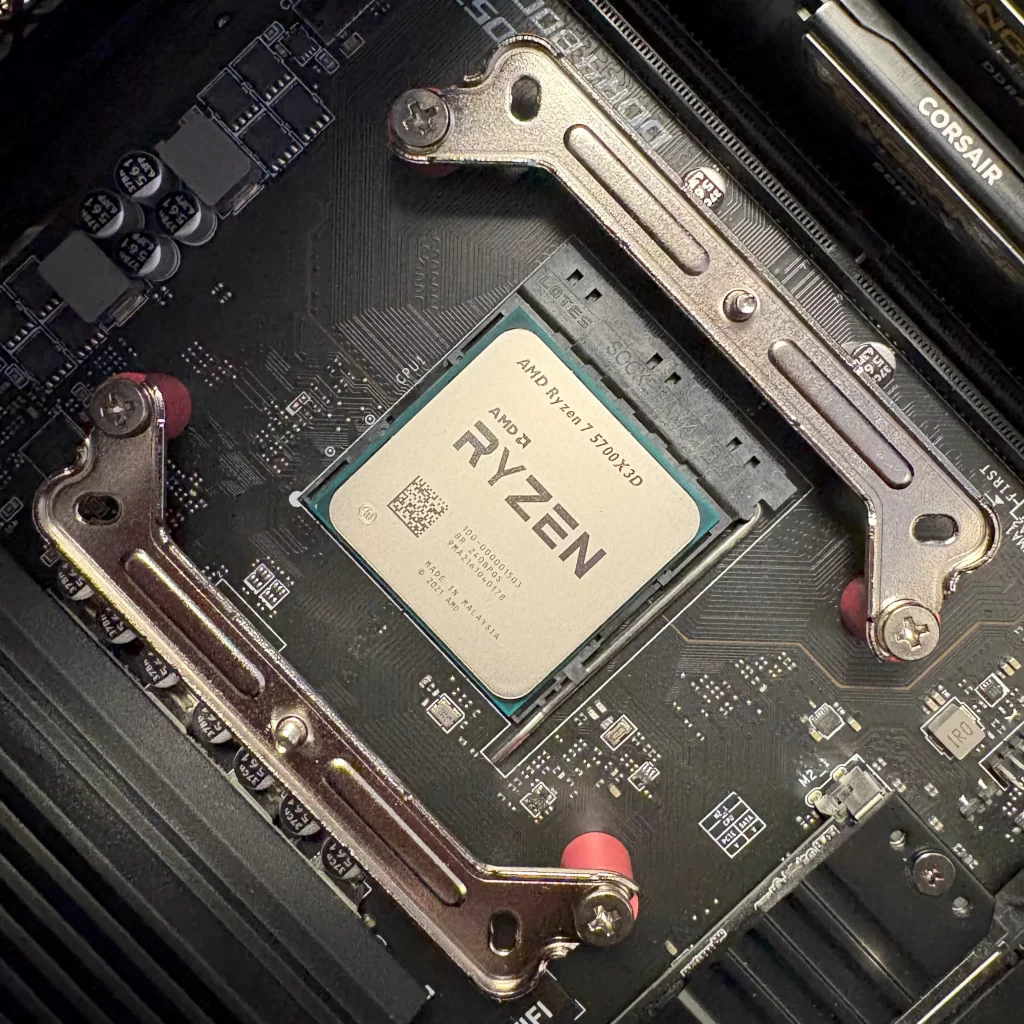
In January 2024, I built my first custom PC. I had previously owned an Alienware Alpha, a small pre-built machine not much larger than the Nintendo Wii. It had terrible airflow, wasn’t particularly powerful for its time, and it ran HOT. I put up with its quirks for many years, but I decided it was finally time to take the leap and build my own gaming rig. It was an awesome learning experience that threw me back into the world of PC gaming with a suite of upgraded hardware.
Later on in the year, I made another change by moving from 1080p to 1440p with a new, higher-end monitor. The caveat to this was that my system began to meet its limits in titles like Cyberpunk 2077 and Baldur’s Gate 3 when playing in 1440p. As a result, I had to begin turning down in-game graphics settings in order to play games at my monitor’s native resolution while maintaining a decent frame rate, a sacrifice that felt counterintuitive to moving to a higher resolution in the first place.
With this in-mind, I decided to treat myself and enter 2025 with a new PC configuration.
To start, here’s the original setup that got me through 2024:
- GPU: ASUS Dual Radeon RX 7600 V2 OC Edition
- CPU: AMD Ryzen 5 5600
- RAM: Corsair Vengeance LPX 16GB (2×8) DDR4 3200Mhz
- PSU: Corsair RM750e
- Motherboard: MSI PRO B550M-VC WiFi
Overall this was a well-balanced build, but new, visually demanding games made the poor RX 7600 huff and puff. Even in the NPC-crowded areas of titles like Starfield, the Ryzen 5 5600 processor – as incredible as its cost-to-performance ratio is – hit its limit.
Below is my updated, 2025 configuration for 1440p gaming:
- GPU: ASRock Challenger Radeon RX 7800 XT
- CPU: AMD Ryzen 7 5700X3D
- RAM: Corsair Vengeance LPX 32GB (2×16) DDR4 3200Mhz
- PSU: Corsair RM750e
- Motherboard: MSI PRO B550M-VC WiFi
The easy answer was to upgrade everything that would impact performance and, well, that’s pretty much what I did. Here’s a breakdown of the individual updates:
AMD Ryzen 5 5600 -> AMD Ryzen 7 5700X3D
The AMD Ryzen 7 5700X3D is not quite the king of the AM4 processor platform, but it’s damn close. The Ryzen 7 5800X3D narrowly holds the lead at an inflated cost that currently renders the CPU totally infeasible to obtain. Because of this, the Ryzen 7 5700X3D is likely the last chip I will ever need for the AM4 socket.
The 5700X3D features AMD’s “3D V-Cache”, a technology that allows for a larger amount of cache to be stacked onto the CPU’s physical die. This approach also leads to lower latency when fetching cached data from the CPU, meaning improved responsiveness and smoother frame rates while gaming.
This is a simplified explanation of how the tech works, but the results are really quite amazing. After swapping CPUs (with no change to RAM or GPU), I experienced significantly higher 1% frame rate lows (meaning my lowest dips in frame rate were more consistent with my overall average FPS) which resulted in a markedly smoother experience in CPU-intensive games.
Corsair Vengeance LPX 16GB -> Corsair Vengeance LPX 32GB
Increasing RAM is one of those upgrades that many people do, but in my case, I’m not sure that 16GB was ever holding me back. The truth is that DDR4 memory has become so affordable, I decided to move to 32GB as a means of eliminating this as a possible bottleneck as I push for higher frame rates on increasingly high-end gear. Better to have more than not enough, and Corsair’s RAM offerings have treated me well so far.
ASUS Dual Radeon RX 7600 V2 OC Edition -> ASRock Challenger Radeon RX 7800 XT
This is the big one. Moving from the RX 7600 to the RX 7800 XT has been a substantial improvement. Pretty much every aspect of the 7600 has been dialled up in the 7800 XT, with a sizable increase in GPU memory, doubled from 8GB to 16GB. This major bump in performance does come at the cost of higher power consumption for the card, but I’m still comfortably in the recommended range with my 750W power supply.
In terms of the 7800 XT model I chose, I went with the ASRock Challenger. Though I’m not particularly fixated on my hardware temperatures, I was interested to see how this dual fan model would perform in comparison to many of the triple fan designs of this card. Even under 100% utilisation for extended periods of time, the card stays below 70° Celsius. Pretty cool!
For me, this is probably as far as I’ll take my current build, considering my AM4 socket motherboard as the backbone of my PC. Any sizable upgrade down the road would mean moving to an entirely new CPU platform, but it should be a long time before this setup starts to show its age. I tend to play a lot of older games, but the new releases that I do play have been running fantastic in 1440p. I’m really happy with the results of the upgrade, and I’m feeling a lot less restrained by hardware limitations.
Happy gaming in 2025.